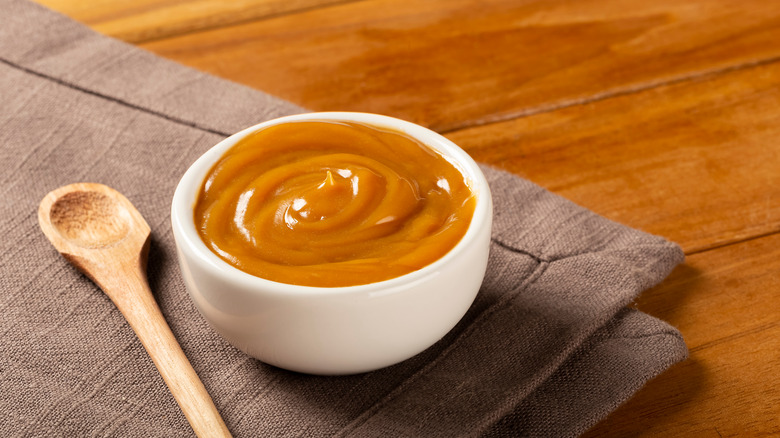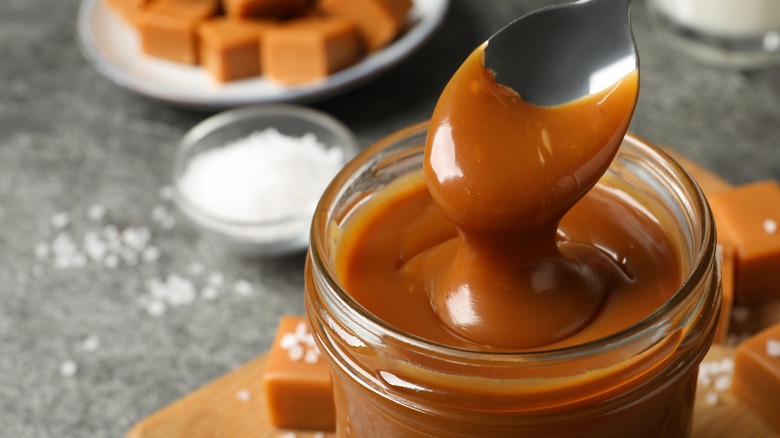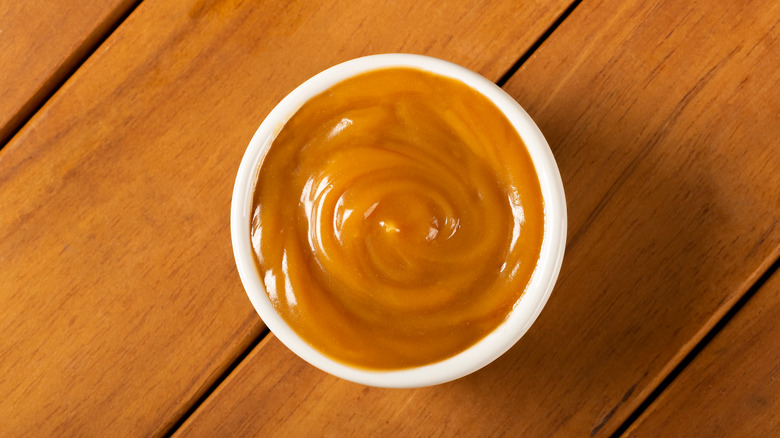What Is The Difference Between Dulce De Leche And Caramel?
Caramel and dulce de leche both have an incredibly smooth texture with a mouthwatering mellow taste that makes them the perfect pairing for a variety of delicious dishes. Whether you're feeling adventurous and try them mixed in with breakfast staples like pancakes and crepes or prefer them drizzled on classic desserts like ice cream and cheesecake, you really can't go wrong with either ingredient. But at a glance, it might be difficult to define the answer to the question: What is the difference between caramel and dulce de leche?
After all, they're both gloriously rich and golden-hued sauces with sweet and toasty flavors, but they have some key distinctions you should know about before you dish them up for your next meal. Some of the main differences between the two involve which ingredients are used, how long each is heated for, and what vessels you can make each of them in.
Caramel
Caramel is made by heating sugar at a very high heat until it (get this) caramelizes and achieves the traditional darker tone, from pale gold to deep amber — this can be done either wet or dry. A caramel sauce (the stuff most of us are probably familiar with) is the end result of combining caramel with other ingredients like half and half, cream, butter and/or vanilla extract, depending on the recipe. The sweet stuff appears in a number of popular desserts, including pralines, creme brulee, and sundaes.
If you don't add dairy to the caramel, you can make firmer candies like these salted caramels dipped in chocolate. And if you take it really dark, you can even experiment with savory caramel.
Dulce de Leche
Though dulce de leche sounds like caramel's much more worldly cousin (the name roughly translates from Spanish to "[a] sweet made from milk"), the concept behind it is pretty simple. To make dulce de leche, you heat sweetened milk until a chemical reaction occurs that changes the liquid to a deeper caramel-like consistency and shade.
Unlike caramel, dulce de leche is slowly heated and at much lower temps. The milk used can also vary depending on the region the recipe comes from, ranging from coconut milk or cow's milk with added sugar to sweetened condensed milk. Methods vary too — you can make dulce de leche on the stovetop, in the oven, or even in a slow cooker. The end result is a rich and sweet sauce that is sometimes slightly crumbly, and is the star ingredient of a slew of desserts including ice cream, cookies, and desserts like tres leches and flan.


